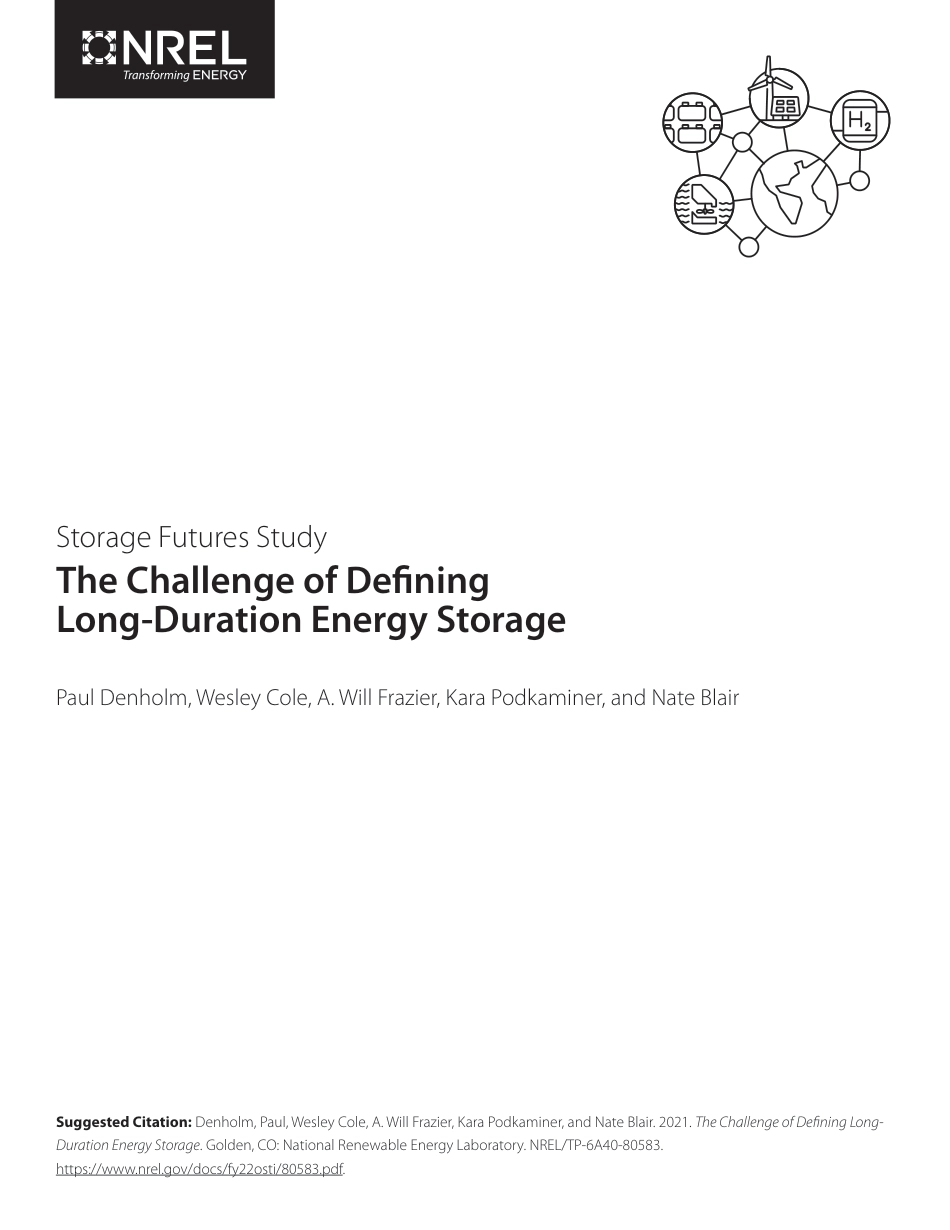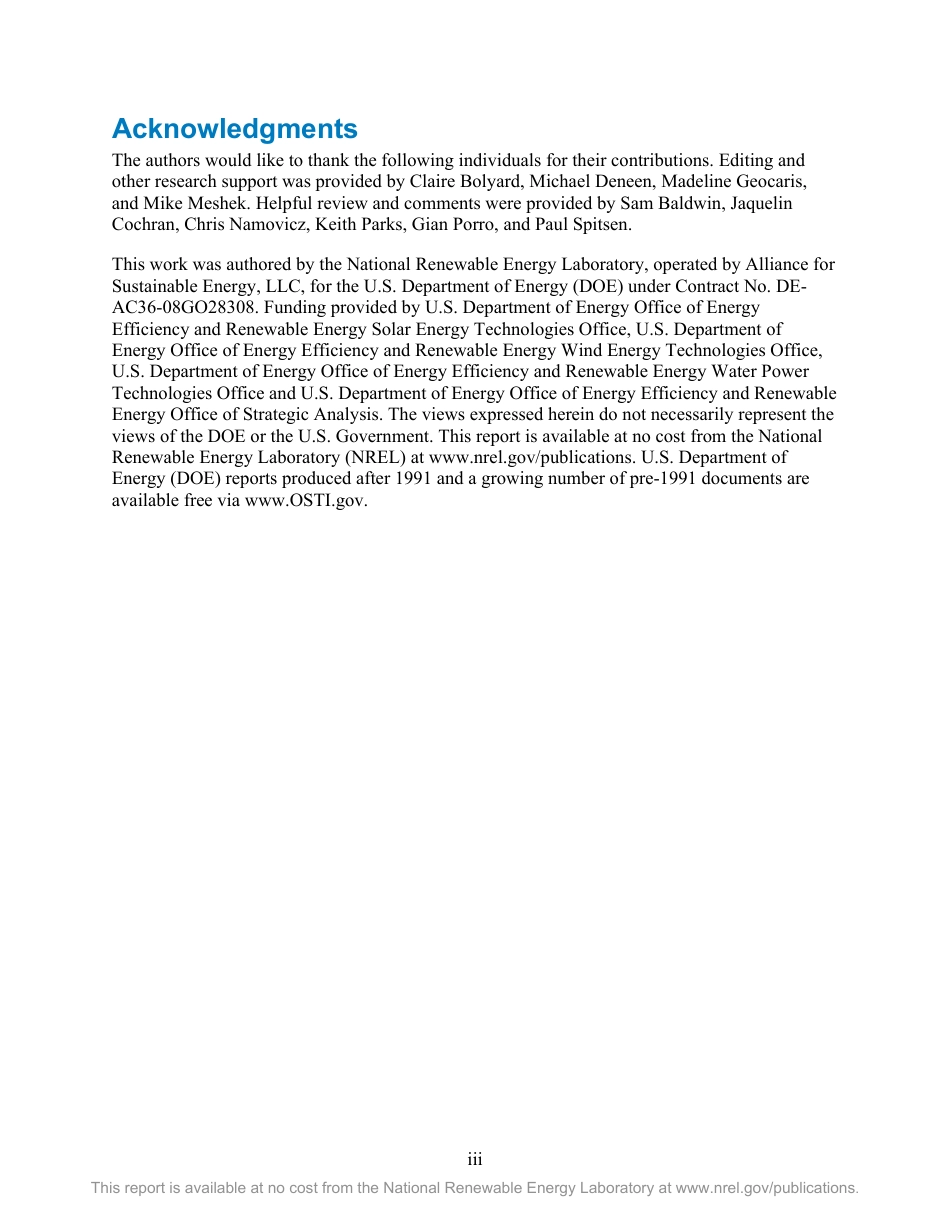Paul Denholm, Wesley Cole, A. Will Frazier, Kara Podkaminer, and Nate BlairStorage Futures StudyThe Challenge of Defining Long-Duration Energy StorageSuggested Citation: Denholm, Paul, Wesley Cole, A. Will Frazier, Kara Podkaminer, and Nate Blair. 2021. The Challenge of Defining Long-Duration Energy Storage. Golden, CO: National Renewable Energy Laboratory. NREL/TP-6A40-80583. https://www.nrel.gov/docs/fy22osti/80583.pdf.Storage Futures StudyThe Challenge of Defining Long-Duration Energy StoragePaul Denholm, Wesley Cole, A. Will Frazier, Kara Podkaminer, and Nate Blairiii This report is available at no cost from the National Renewable Energy Laboratory at www.nrel.gov/publications. Acknowledgments The authors would like to thank the following individuals for their contributions. Editing and other research support was provided by Claire Bolyard, Michael Deneen, Madeline Geocaris, and Mike Meshek. Helpful review and comments were provided by Sam Baldwin, Jaquelin Cochran, Chris Namovicz, Keith Parks, Gian Porro, and Paul Spitsen. This work was authored by the National Renewable Energy Laboratory, operated by Alliance for Sustainable Energy, LLC, for the U.S. Department of Energy (DOE) under Contract No. DE-AC36-08GO28308. Funding provided by U.S. Department of Energy Office of Energy Efficiency and Renewable Energy Solar Energy Technologies Office, U.S. Department of Energy Office of Energy Efficiency and Renewable Energy Wind Energy Technologies Office, U.S. Department of Energy Office of Energy Efficiency and Renewable Energy Water Power Technologies Office and U.S. Department of Energy Office of Energy Efficiency and Renewable Energy Office of Strategic Analysis. The views expressed herein do not necessarily represent the views of...



